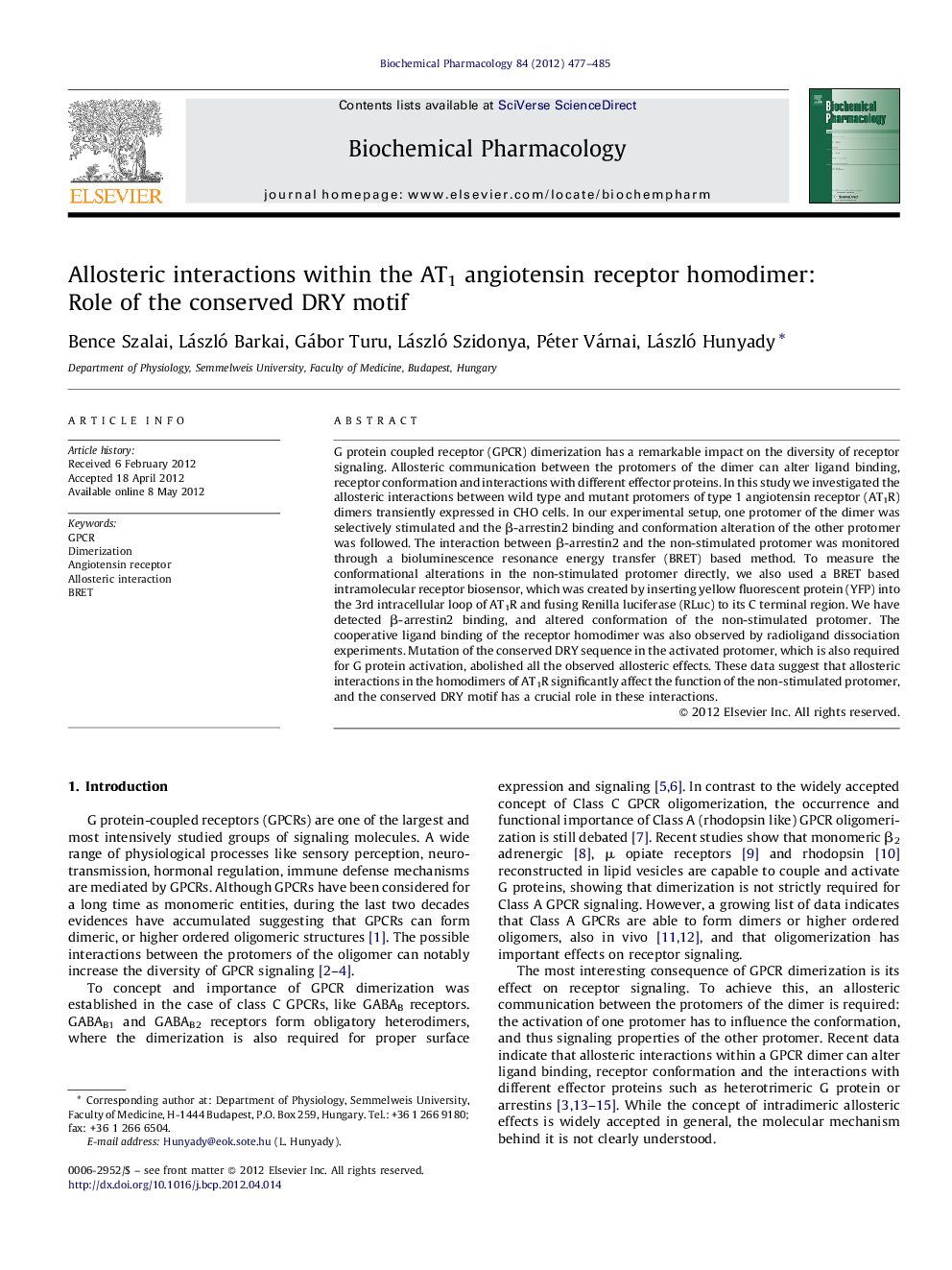| Article ID | Journal | Published Year | Pages | File Type |
|---|---|---|---|---|
| 2512521 | Biochemical Pharmacology | 2012 | 9 Pages |
G protein coupled receptor (GPCR) dimerization has a remarkable impact on the diversity of receptor signaling. Allosteric communication between the protomers of the dimer can alter ligand binding, receptor conformation and interactions with different effector proteins. In this study we investigated the allosteric interactions between wild type and mutant protomers of type 1 angiotensin receptor (AT1R) dimers transiently expressed in CHO cells. In our experimental setup, one protomer of the dimer was selectively stimulated and the β-arrestin2 binding and conformation alteration of the other protomer was followed. The interaction between β-arrestin2 and the non-stimulated protomer was monitored through a bioluminescence resonance energy transfer (BRET) based method. To measure the conformational alterations in the non-stimulated protomer directly, we also used a BRET based intramolecular receptor biosensor, which was created by inserting yellow fluorescent protein (YFP) into the 3rd intracellular loop of AT1R and fusing Renilla luciferase (RLuc) to its C terminal region. We have detected β-arrestin2 binding, and altered conformation of the non-stimulated protomer. The cooperative ligand binding of the receptor homodimer was also observed by radioligand dissociation experiments. Mutation of the conserved DRY sequence in the activated protomer, which is also required for G protein activation, abolished all the observed allosteric effects. These data suggest that allosteric interactions in the homodimers of AT1R significantly affect the function of the non-stimulated protomer, and the conserved DRY motif has a crucial role in these interactions.
Graphical abstractFigure optionsDownload full-size imageDownload as PowerPoint slide
